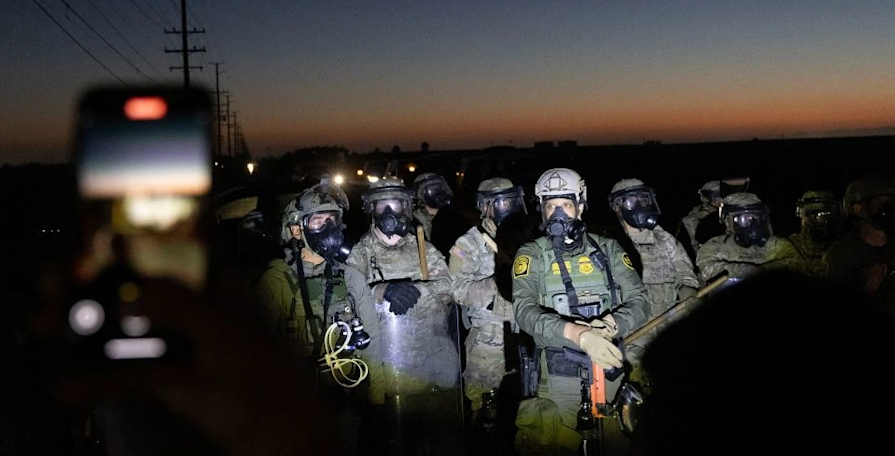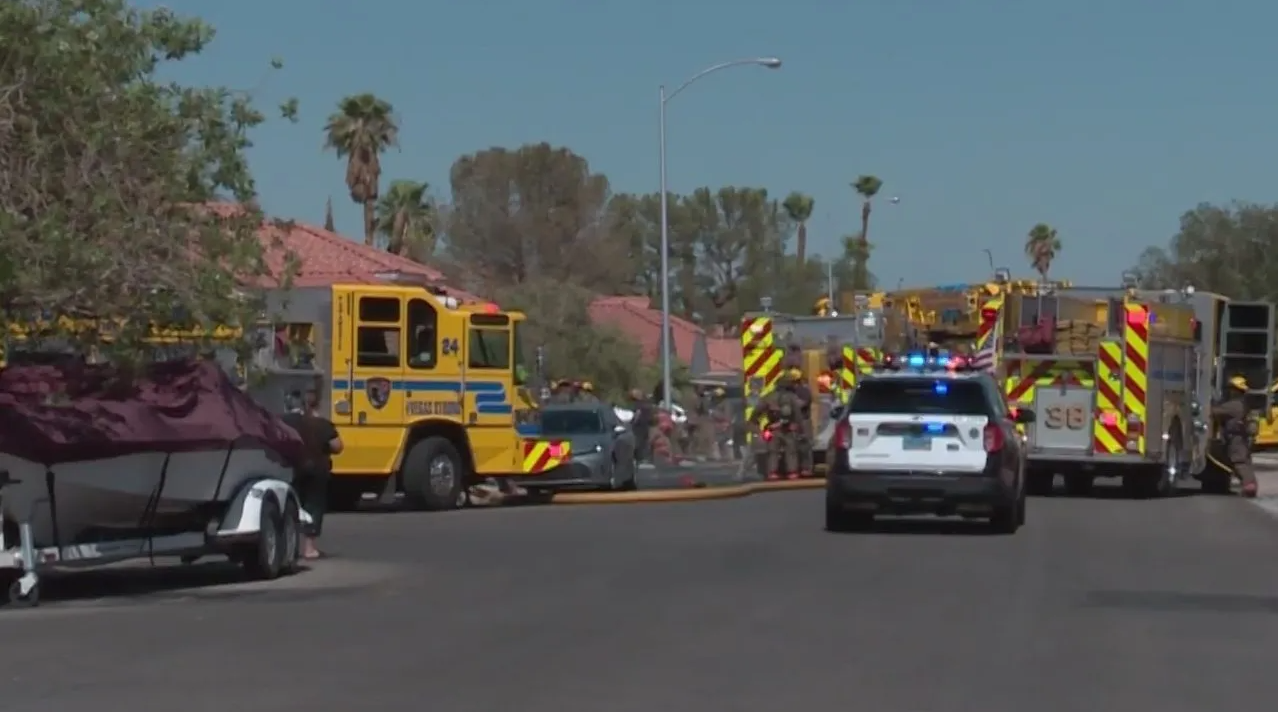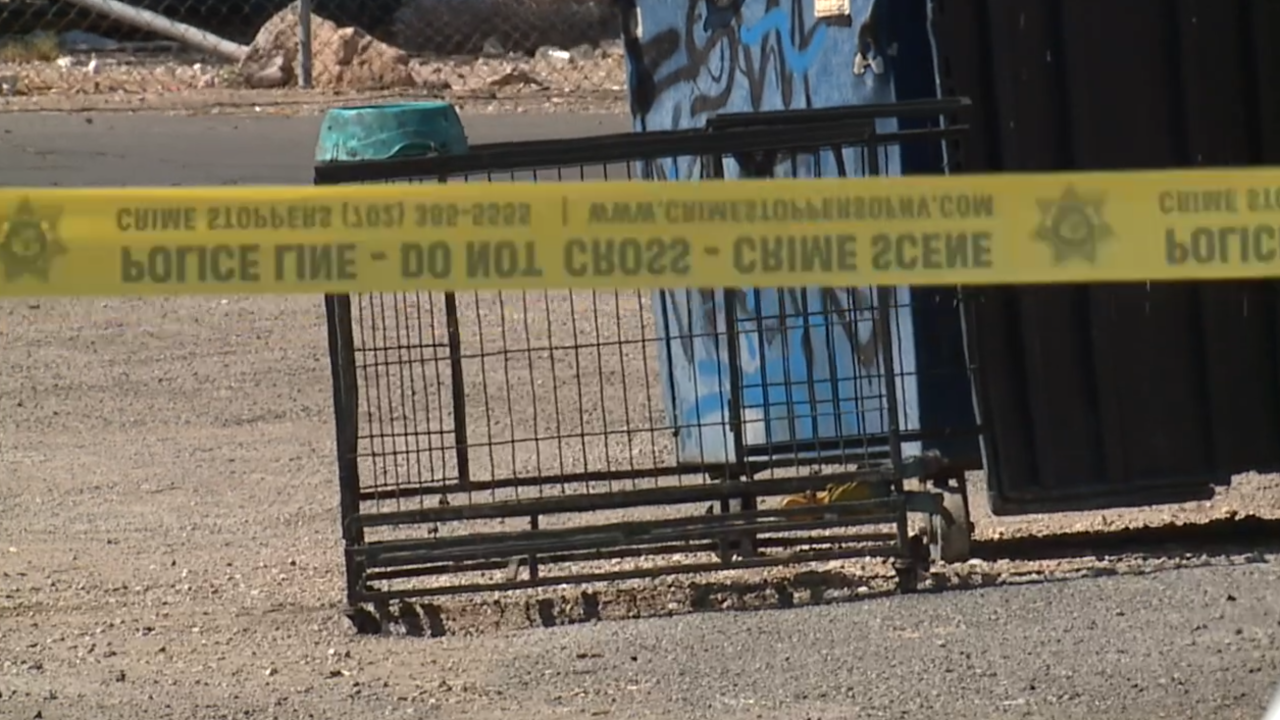Las Vegas air quality deteriorates as wildfire smoke and summer haze blanket the valley

Las Vegas, NV – Residents across the Las Vegas Valley are waking up to increasingly hazy skies as a combination of wildfire smoke, post-Fourth of July fireworks residue, and typical summer conditions push air quality into concerning levels. The murky horizons that have become all too familiar are prompting health warnings and raising questions about what exactly locals are breathing.
A complex monitoring system at work
Clark County’s Division of Air Quality operates a sophisticated network of 18 monitoring stations strategically placed throughout the valley to track air pollution in real-time. These stations, ranging from simple sensors to what officials call “super stations,” continuously analyze multiple pollutants including ozone, particulate matter, and nitrogen oxides.
“We have several instruments here that help us analyze air quality and that helps synthesize the data that funnels back into our systems,” explained Kevin MacDanold, spokesperson for Clark County’s Air Quality division, during a recent tour of one monitoring facility near Jerome Mack Middle School.
Inside these garage-sized buildings, complex equipment measures pollutants down to the second, tracking everything from ground-level ozone to the tiniest particles that can penetrate deep into human lungs. The stations pay particular attention to PM2.5 and PM10 – particulate matter measurements that indicate how much microscopic debris is floating in the air.
Multiple sources compound the problem
The current air quality crisis stems from several converging factors. Wildfire smoke continues to drift into the valley from active blazes in California and Arizona, while residual smoke from Fourth of July celebrations lingers in the stagnant summer air. The combination has pushed air quality readings into the “moderate” category across much of the valley, with some areas registering as “unhealthy for sensitive groups.”
“With the smaller the particulate matter, the deeper in your lungs it can be inhaled,” MacDanold noted, explaining why the county monitors two specific sizes of particles according to federal regulations.
The geography of Las Vegas creates a natural bowl that traps pollutants, especially during summer months when high pressure systems create temperature inversions. These inversions act like a lid, preventing pollution from dispersing and concentrating it at ground level where residents breathe.
Real-time data reveals concerning trends
Current monitoring shows elevated levels of both ozone and particulate matter throughout the valley. From Apex in the northeast to Jean in the southwest, most stations are recording air quality that, while not immediately dangerous to healthy adults, poses risks to vulnerable populations.
The monitoring network’s placement reflects the valley’s unique topography and wind patterns. Carbon monoxide tends to accumulate on calm, cold days in the eastern portions of the valley, while ozone forms on hot, sunny days in the northwest and at higher elevations. This strategic positioning allows officials to track how different pollutants affect various neighborhoods.
Health implications mount
The deteriorating air quality carries serious health implications, particularly for sensitive groups including children, the elderly, and those with pre-existing respiratory conditions. Clark County officials report that wildfire smoke contains small particles and other pollutants that can aggravate bronchitis, asthma, and heart disease.
“Folks with breathing issues may want to take precaution,” officials warn, especially when visible haze or the smell of smoke is present.
The health effects extend beyond immediate respiratory concerns. Prolonged exposure to poor air quality can exacerbate cardiovascular conditions, trigger asthma attacks, and cause long-term lung damage. Emergency room visits typically spike during periods of poor air quality, particularly among vulnerable populations.
Las Vegas’s ongoing air quality challenge
The current haze represents just the latest episode in Las Vegas’s ongoing struggle with air quality. Despite improvements in some areas, the valley continues to face challenges meeting federal air quality standards, particularly for ozone pollution.
Clark County has never achieved full compliance with federal ozone standards, ranking among the worst metropolitan areas nationally for this pollutant. The Las Vegas-Henderson area recently placed 9th worst for ozone pollution out of 229 metro areas studied by the American Lung Association.
The problem intensifies during summer months when high temperatures accelerate the formation of ground-level ozone. Vehicle emissions, industrial activity, and natural sources combine with intense sunlight to create a photochemical soup that irritates airways and damages lung tissue.
Climate change complicates solutions
Rising temperatures associated with climate change are making air quality management increasingly difficult. Higher temperatures accelerate ozone formation and create conditions conducive to more frequent and intense wildfires. The result is a feedback loop where climate change worsens air quality, which in turn impacts public health.
Nevada has implemented stricter vehicle emission standards and pushed for more electric vehicle adoption, but progress remains slow. Currently, only 1-2% of vehicles sold in Nevada are electric, though new regulations following California’s model aim to increase this percentage significantly by 2030.
What residents can do
During periods of poor air quality, health officials recommend several protective measures:
- Stay indoors when haze is visible or smoke can be smelled
- Keep windows and doors closed to prevent outdoor air from entering homes
- Limit outdoor exercise and strenuous activities
- Use air purifiers with HEPA filters indoors
- Check air quality readings before planning outdoor activities
- Consider wearing N95 masks during severe pollution events
Real-time air quality data is available through multiple sources, including the county’s monitoring website at DESAQMonitoring.ClarkCountyNV.gov, the AIRNow mobile app, and daily alerts via email or text through enviroflash.org.
Looking ahead
As wildfire season intensifies across the Western United States and urban growth continues in the Las Vegas Valley, air quality challenges are likely to persist and potentially worsen. The combination of natural and human-made pollution sources requires comprehensive solutions involving stricter emissions controls, better urban planning, and regional cooperation on wildfire management.
For now, residents must navigate the immediate reality of hazy skies and compromised air quality. The sophisticated monitoring network provides crucial data for making informed decisions about outdoor activities, but ultimately, clearing the air over Las Vegas will require long-term commitment to reducing emissions and adapting to a changing climate.
The orange-tinted sunsets may be visually striking, but they serve as a daily reminder that the air Las Vegas residents breathe carries an increasingly heavy burden of pollutants – a burden that impacts every breath taken in the Entertainment Capital of the World.
Image Source: https://www.yahoo.com/news/las-vegas-air-quality-concerns-041434217.html
Category: Local News, Weather
Subcategory: Environment
Date: 07/15/2025




